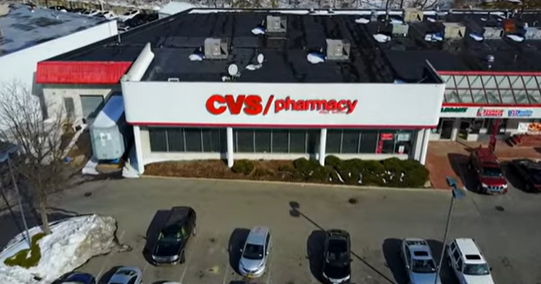While we might be shocked to see the news about the financial problems some of the country’s biggest retailers are facing this year, many brands are silently disappearing from the U.S. retail industry without catching the attention of the media. They are closing a smaller number of locations at a time not to raise any red flags. However, these chains have actually been significantly reducing their store counts over the past year, leaving a massive hole in the market. Low-income communities are losing their local pharmacies, coffee shops, and grocery stores. At the same time, big cities are witnessing what experts call the “retail exodus,” a new trend in which retailers leave highly populated areas where theft is becoming rampant. The scenario is changing very rapidly. Continued below the video
For example, CVS revealed it will close 900 stores by the end of 2024, the Daily Mail reported. About 300 CVS stores are being closed in 2023 as the retailer adjusts to post-pandemic demographics and quit areas where inventory losses due to shrink are going up. The drugstore chain said it is undergoing a new retail footprint strategy, and that it is trying to implement more tech in its operations. CVS has been open about the impact of shoplifting on its bottom line, estimating hundreds of millions in losses in the current fiscal year. The closings are sparking debates about ‘pharmacy deserts’ as more retailers leave low-income communities.
Millions of households may lose their local drugstore, but the retail giant said the profit losses due to theft give it “no choice”. Similarly, Over 400 Starbucks stores have been shuttered in the U.S., according to The U.S. Sun. The good news is that the company opened new locations too, in a smaller more cost-efficient format. Still, the closings have left millions of customers across many cities without their local coffee shop. In fact, on October 22, the coffeehouse chain closed 7 stores in San Francisco, and it signaled that it may leave the area altogether if the city’s theft problem continues to escalate. The reasons behind the large number of closings are many. On top of rising shoplifting, the company has been accused of union busting after deciding to shutter 150 stores where unionized workers demanded better pay and working conditions and went on strike during the spring.
Moreover, Starbucks also eliminated underperforming stores from its system and closed older locations where it would be too expensive to do renovations. It’s getting increasingly harder to manage a retail business in America. Businesses aren’t being able to keep up with the constant changes in consumer behavior. They are also failing to accurately predict demand and financially hurting due to tighter credit conditions amid a slower spending environment. It’s safe to say that we will hear about bankruptcies and shutdowns far more frequently in the months ahead. Many CEOs are hoping for the best but preparing for the worst as the threat of recession becomes bigger, and so should you.
































CLICK HERE FOR COMMENTS